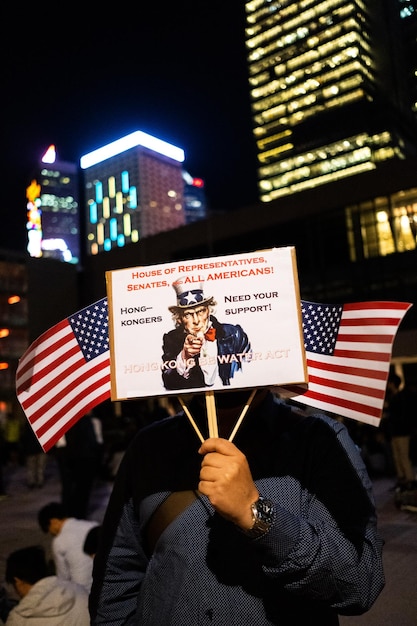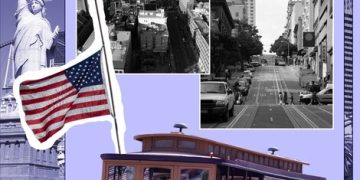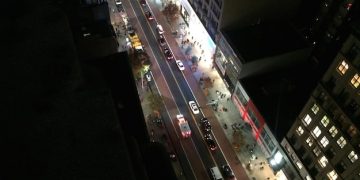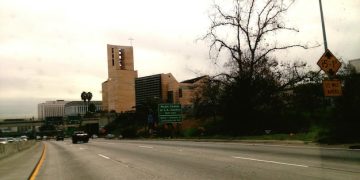How US Immigration Policy Changes Impact Labor and Economy

Changes in US immigration policy can significantly affect the labor market and the economy by altering the supply of workers, influencing wage levels, and impacting economic growth across various sectors.
The United States has long been a nation shaped by immigration, with its policies playing a crucial role in determining the composition and size of its labor force. Understanding how will changes in US immigration policy affect the labor market and economy is essential for policymakers, businesses, and individuals alike, as these changes cascade through various sectors and influence economic growth.
Understanding the Current US Immigration Landscape
The current US immigration landscape is shaped by a complex web of laws, regulations, and executive actions. These elements determine who can enter the country, the conditions of their stay, and their eligibility for employment. Understanding the current landscape requires considering various visa categories, enforcement policies, and the overall political climate.
Key Visa Categories
Visa categories play a significant role in regulating the inflow of workers into the US economy. Different visas are designed for specific types of workers and purposes.
- H-1B Visas: These visas are for skilled workers in specialized fields such as IT, engineering, and finance. They are often sought after by US companies needing specialized expertise.
- H-2A Visas: These are for temporary agricultural workers. They allow farmers to hire foreign workers to fill seasonal labor needs.
- H-2B Visas: These visas cater to temporary non-agricultural workers in sectors like hospitality, construction, and landscaping.
- EB Visas: Employment-based immigrant visas which allow foreign nationals to gain permanent residency based on their job skills and employer sponsorship.
Enforcement Policies
Enforcement policies also significantly impact the labor market. Increased border security and stricter enforcement can reduce the number of undocumented workers, leading to labor shortages in certain sectors.

The existing legal context significantly shapes who works in the U.S. and under what conditions. It helps to set the stage for discussing how potential changes in policy might impact the economy.
Potential Changes in Immigration Policy
Several potential changes in immigration policy could significantly alter the labor market and the broader economy. These changes range from comprehensive reforms to targeted adjustments in specific visa programs and enforcement measures.
Increased Border Security
One potential change is increased border security measures, which could reduce the inflow of undocumented workers. This would likely lead to labor shortages in sectors that heavily rely on this workforce, such as agriculture and construction.
Visa Program Reforms
Reforming visa programs, such as H-1B and H-2A visas, could have far-reaching effects. Changes might include increasing the number of available visas, altering eligibility requirements, or prioritizing certain industries or skill sets.
- H-1B Reforms: Modifications to the H-1B visa program could ensure that higher-skilled workers are prioritized, potentially boosting innovation but also increasing labor costs.
- H-2A Reforms: Changes to the H-2A visa program could streamline the process for agricultural employers to hire temporary workers, addressing labor shortages in the farming sector.
Pathways to Legalization
Creating pathways to legalization for undocumented immigrants could provide stability to the labor market and reduce uncertainty for both workers and employers. This can lift wages and employment rates as workers gain more access to opportunities.
Understanding these possible adjustments helps to frame a discussion around sectors most likely to see change.
Impact on Key Economic Sectors
Changes in US immigration policy are poised to impact different economic segments unevenly, and many sectors, like agriculture, technology, and healthcare, are anticipated to be particularly affected due to varying degrees of reliance on foreign-born workers.
Agriculture
Agriculture is heavily reliant on immigrant labor, particularly seasonal workers. Stricter immigration policies could lead to labor shortages, increased costs for farmers, and potentially higher prices for consumers.

Technology
The technology sector depends on skilled foreign workers, often through the H-1B visa program. Changes to this program could affect the ability of tech companies to attract and retain talent, potentially impacting innovation and competitiveness. There is concern that labor restrictions in the tech sector could cause companies to offshore jobs.
Healthcare
Healthcare also relies on foreign-born workers, including nurses and doctors. Immigration policy changes could exacerbate existing healthcare staffing shortages, particularly in rural areas.
The health sector is particularly urgent because of its time-sensitive and life-saving needs. As these sectors transform, so will aggregate metrics of the economy.
Effects on Wage Levels and Employment Rates
The implications of changes to US immigration are broad. Adjustments in wage levels and employment rates are expected to shift in ways that could create new problems or relieve old pressures, depending on the specifics of new policies.
Wage Levels
Changes in immigration policy can affect wage levels across different skill levels. Reduced labor supply in certain sectors could lead to increased wages, while increased labor supply could have the opposite effect. Immigration is complex, because it influences both consumption and production within the U.S.
Employment Rates
Employment rates can also be influenced by immigration policy changes. Reduced immigration could lead to labor shortages, particularly in low-skilled jobs, while increased immigration could boost overall employment but also potentially increase competition for jobs.
- High-Skilled Workers: Changes that favor high-skilled immigrants could boost innovation and productivity, leading to higher employment rates and wages in certain sectors.
- Low-Skilled Workers: Restrictive immigration policies could lead to labor shortages and increased demand for low-skilled workers, potentially driving up wages in the short term.
These forces will impact productivity and job growth.
Economic Growth and Innovation
The economic growth and innovation in this country will certainly see change based on the nature of new immigration laws. Since immigrants contribute to the economy both through labor and entrepreneurship, different considerations will lead to different outcomes.
Impact on GDP
Immigration is correlated with GDP growth, as immigrants contribute to the labor force and consumer spending. Restrictive immigration policies could slow down economic growth. Immigrants also tend to be entrepreneurial, so policies that discourage immigration could suppress entrepreneurial ventures.
Innovation and Entrepreneurship
Immigrants have historically been a vital source of innovation and entrepreneurship in the US. Changes in immigration policy that affect the ability of talented individuals to enter and stay in the US could impact the country’s competitive edge.
As these large scale effects unfold, changes have a way of causing more change.
Long-Term Consequences and Future Outlook
The long-term consequences of alterations to US immigration are multiple and significant. It is, therefore, important for the US to ensure they are acting in accordance with the goals of the future.
Demographic Shifts
Immigration significantly influences the demographic composition of the US population. Changes in immigration policy could affect the age structure, racial and ethnic diversity, and overall population growth of the country. The demographic implications of these policies range from the demand in housing markets to the need for elderly care.
Social and Cultural Impacts
Immigration also has important social and cultural implications, influencing everything from language diversity to cultural norms. Changes in immigration policy could lead to shifts in social cohesion and cultural integration.
Looking to the future, it becomes clear how important it is to have foresight in this sector of policy.
| Key Point | Brief Description |
|---|---|
| 🔑 Visa Program Effects | Reforms in H-1B and H-2A visas can impact skills and labor demands. |
| 🚜 Agriculture | Immigration rules alter labor availability and production costs. |
| 🏥 Healthcare | Healthcare staffing shortages could be worsened by immigration changes. |
| 📈 GDP | GDP growth is related to how many willing workers can fill jobs. |
Frequently Asked Questions
▼
H-1B visas allow companies to employ foreign workers in specialized occupations. These workers often fill critical roles which promotes innovation and economic growth. Restrictions on these visas can hurt the economy.
▼
Stricter border security can lead to labor shortages, especially in sectors like agriculture and construction. This is because these industries rely heavily on immigrant labor, decreasing output and raising prices.
▼
Legalizing undocumented immigrants can stabilize the labor market. It allows workers to seek better jobs. They also spend more and contribute more to the economy because they can work with less uncertainty.
▼
Yes, economic growth is certainly influenced by immigration policies. Immigrants contribute to consumer spending and the labor force. Therefore policies that limit immigration tend to also slow down economic growth rates.
▼
Immigration brings diverse skill sets and perspectives. Immigrants have a history of entrepreneurship and innovation in the U.S. Removing immigration lowers the rate of new ideas that come into the country, harming innovation.
Conclusion
In conclusion, changes in US immigration policies have multi-faceted impacts on the labor market and the economy, and it is paramount for policymakers to consider these factors when modifying immigration laws.





